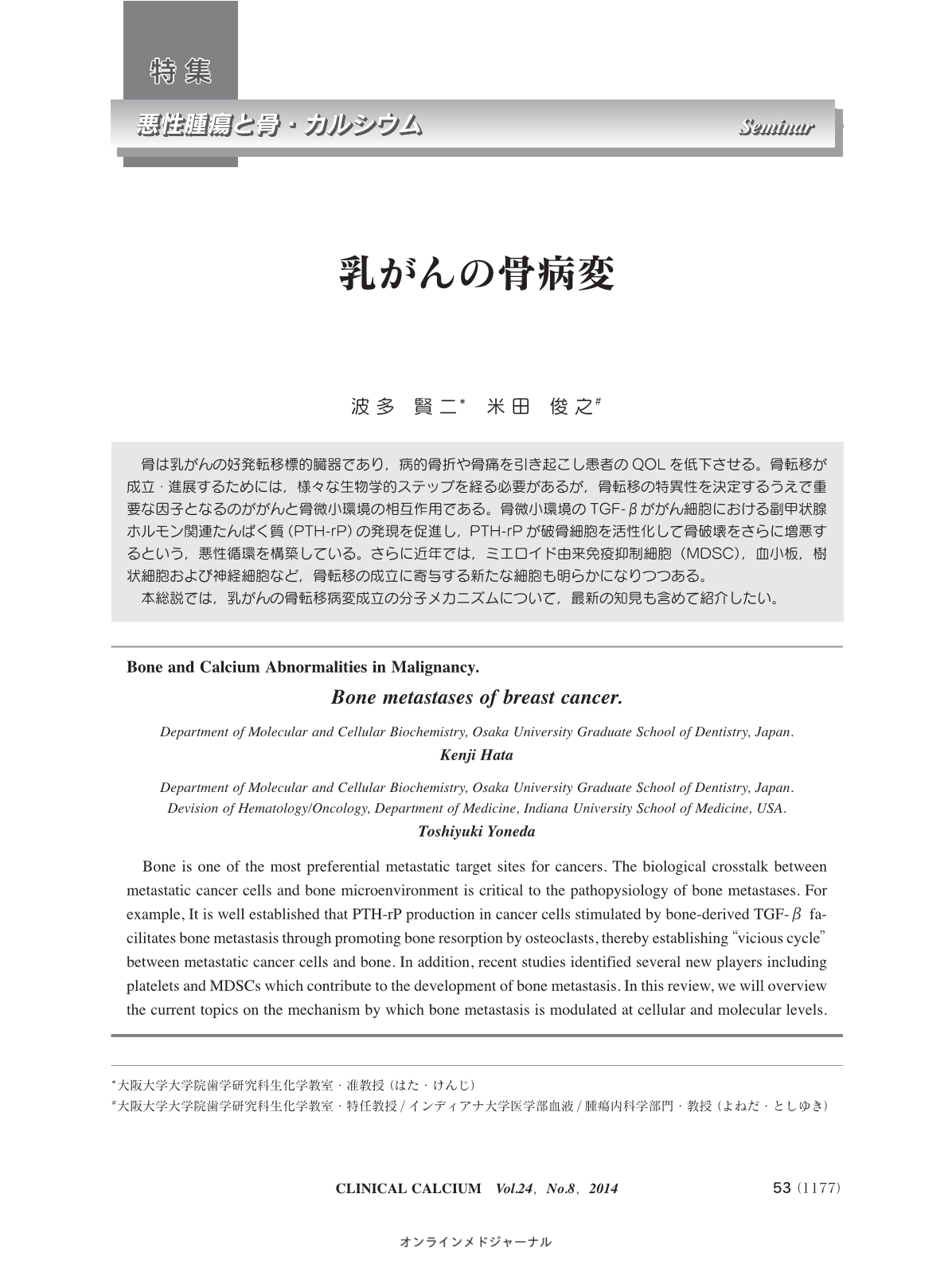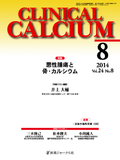Japanese
English
- 有料閲覧
- Abstract 文献概要
- 1ページ目 Look Inside
- 参考文献 Reference
骨は乳がんの好発転移標的臓器であり,病的骨折や骨痛を引き起こし患者のQOLを低下させる。骨転移が成立・進展するためには,様々な生物学的ステップを経る必要があるが,骨転移の特異性を決定するうえで重要な因子となるのががんと骨微小環境の相互作用である。骨微小環境のTGF-βががん細胞における副甲状腺ホルモン関連たんぱく質(PTH-rP)の発現を促進し,PTH-rPが破骨細胞を活性化して骨破壊をさらに増悪するという,悪性循環を構築している。さらに近年では,ミエロイド由来免疫抑制細胞(MDSC),血小板,樹状細胞および神経細胞など,骨転移の成立に寄与する新たな細胞も明らかになりつつある。 本総説では,乳がんの骨転移病変成立の分子メカニズムについて,最新の知見も含めて紹介したい。
Bone is one of the most preferential metastatic target sites for cancers. The biological crosstalk between metastatic cancer cells and bone microenvironment is critical to the pathopysiology of bone metastases. For example, It is well established that PTH-rP production in cancer cells stimulated by bone-derived TGF-β facilitates bone metastasis through promoting bone resorption by osteoclasts, thereby establishing “vicious cycle” between metastatic cancer cells and bone. In addition, recent studies identified several new players including platelets and MDSCs which contribute to the development of bone metastasis. In this review, we will overview the current topics on the mechanism by which bone metastasis is modulated at cellular and molecular levels.



